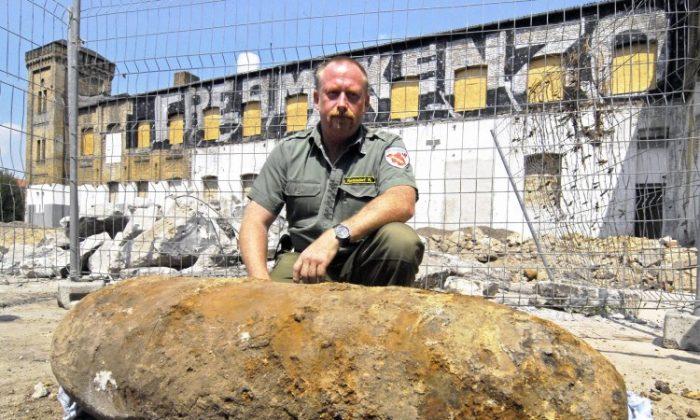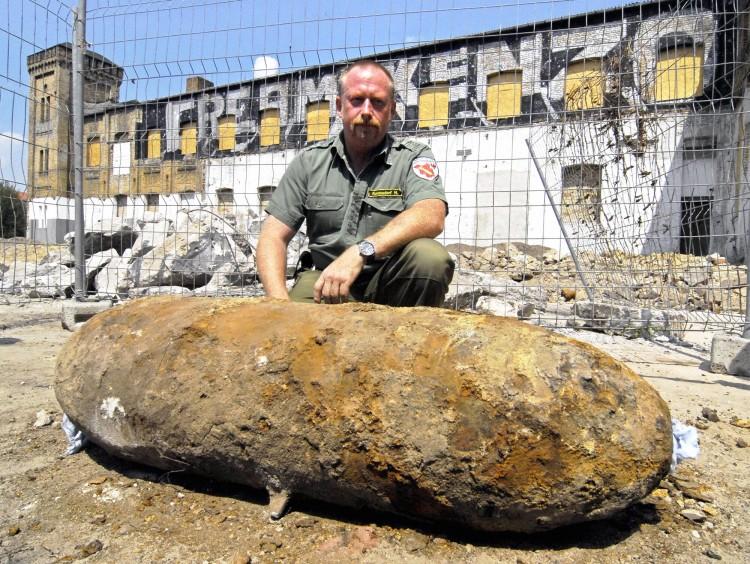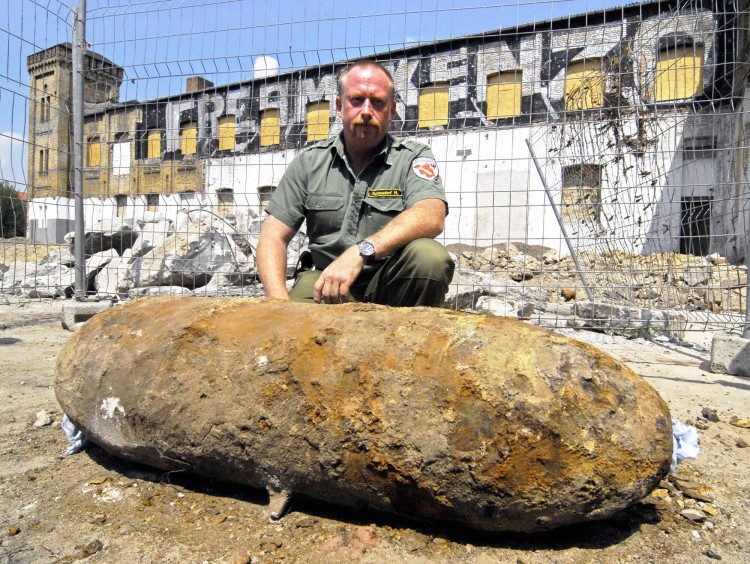Unexploded munitions from World War II are a constant lurking threat in Germany, and some of the buried remnants are now becoming increasingly unstable, said the head of a German bomb disposal squad.
UXO, short for unexploded ordnance, are munitions like bombs, mines, or grenades that failed to detonate as intended, either due to malfunction, design, or other causes. Without removal, the UXOs remain in their original place for decades, revealing themselves over time, sometimes with deadly results.
While there are no reliable national figures, some experts estimate that 10 percent of the 1.6 million bombs that were dropped on Germany by Allied Forces during World War II did not detonate. More than 65 years after the war most of them still lay buried in the ground.
Horst Lenz, head of the regional bomb disposal squad in the state of Rhineland-Palatinate says the most dangerous ones are the British UXOs with a so-called long-delay pistol, also called delay-action bombs. These are bombs that were designed to go off hours or days after they have been dropped. Their goal was to maintain fear and impede rescue operations after a bombing raid.
In one case last year, Lenz defused a delay-action bomb hardly got media attention since “only” 1,000 meters (3,280 feet) needed to be cordoned of. However, compared to conventional bombs, “the risk of defusing this kind was much higher,” he said.
What makes many UXOs, especially British-made, more dangerous over time is that the fuses become increasingly unstable, particular in a moist environment. Therefore the trigger can more easily go off by itself, so that even a slight tremor can set it off.
This became a deadly reality in June 2010 for a bomb disposal team in the northern German city of Gottingen. Even before removal preparations were completed, the bomb, most likely a delay action-bomb, exploded, killing three members of the experienced team, while several were left severely wounded.
Lenz was responsible for successfully defusing the 1.8-ton bomb found in the Rhine River last month that caused Germany’s “biggest evacuation since World War II,” according to authorities.
In the West-German city of Koblenz, a so-called blockbuster bomb, dropped by the British Air Force in 1944, revealed itself on the banks of the river due to particularly low water levels. Nearly half the population of the city, about 45,000 people, had to be evacuated outside a one-mile-radius of the bomb.
Lenz was quite subdued about this one. For him, it was “simply a big bomb.”
Lenz and his team have been lucky so far. There have been no casualties in Rhineland-Palatinate since the 1950s. Similarly, injuries involving civilians in the state are rare as well, which mostly happen when UXO are actively tampered with.
Low by German standards, Lenz’s team found “only” 80 bombs last year while some states, particular in eastern Germany, remove thousands of explosives each year, mostly from former military training areas.
While most UXOs are discovered by chance during construction work and are reported to the authorities, German bomb removal experts also actively search for explosives. After having identified an area by studying World War II-era aerial photographs, teams with the help metal detectors try to locate UXOs.
Experts see it a particular risk with UXOs that self-detonate. It is estimated that every year at least one explodes in Germany. Some industrial areas that were strategic targets during World War II are especially affected. For example, in the town of Oranienburg, north of Berlin, more than 300 UXOs are suspected to be buried in the ground. Since 1991, three have exploded by themselves.
Europe, having been the main battleground over two world wars, particularly Germany, Britain, France, and Belgium, is still littered with unexploded remnants of war.
Unexploded ordnances globally affect millions of people in 84 countries and have contaminated a landmass of about 5 million acres (200,000 square km), said the Center for International Stabilization and Recovery.
Besides injuring or killing civilians, UXOs regularly interfere with farming, construction work, and can, in developing countries, threaten basic survival.






